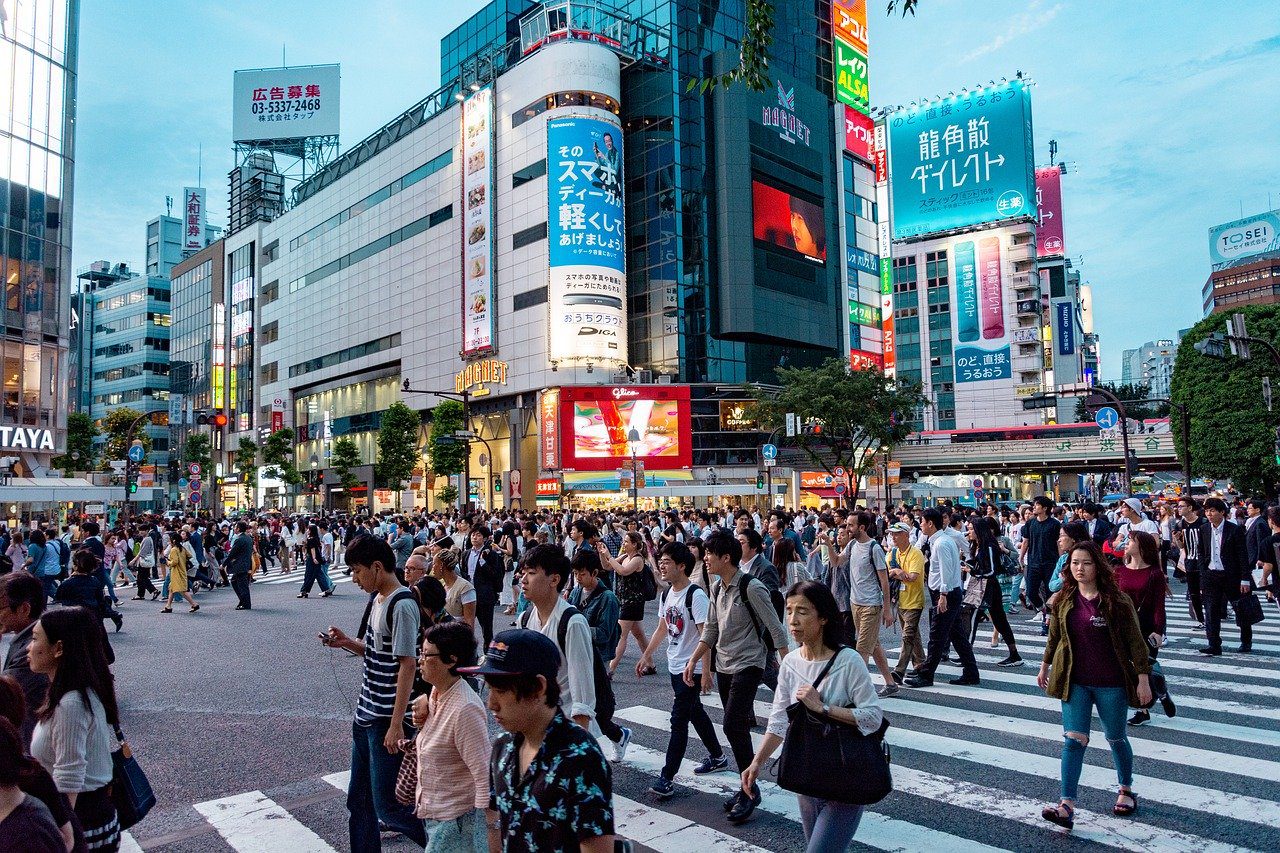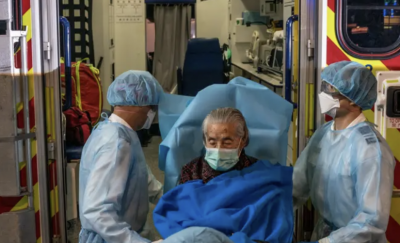As the novel coronavirus sweeps across the United States, it appears to be infecting and killing black Americans at a disproportionately high rate, according to a Washington Post analysis of early data from jurisdictions across the country.
The emerging stark racial disparity led the surgeon general Tuesday to acknowledge in personal terms the increased risk for African Americans amid growing demands that public-health officials release more data on the race of those who are sick, hospitalized and dying of a contagion that has killed more than 12,000 people in the United States.
A Post analysis of available data and census demographics shows that counties that are majority-black have three times the rate of infections and almost six times the rate of deaths as counties where white residents are in the majority.
African Americans by percentage of population and share of coronavirus deaths
Only a few jurisdictions publicly report coronavirus cases and deaths by race.
In Milwaukee County, home to Wisconsin’s largest city, African Americans account for about 70 percent of the dead but just 26 percent of the population. The disparity is similar in Louisiana, where 70 percent of the people who have died were black, although African Americans make up just 32 percent of the state’s population.
In Michigan, where the state’s 845 reported deaths outrank all but New York’s and New Jersey’s, African Americans account for 33 percent of cases and roughly 40 percent of deaths, despite comprising only 14 percent of the population. The state does not offer a breakdown of race by county or city, but more than a quarter of deaths occurred in Detroit, where African Americans make up 79 percent of the population.
And in Illinois, a disparity nearly identical to Michigan’s exists at the state level, but the picture becomes far starker when looking at data just from Chicago, where black residents have died at a rate six times that of white residents. Of the city’s 118 reported deaths, nearly 70 percent were black — a share 40 points greater than the percentage of African Americans living in Chicago.
[Sign up for our Coronavirus Updates newsletter to track the outbreak. All stories linked in the newsletter are free to access.]
| County majority | Counties | Cases per 100k | Deaths per 100k |
|---|---|---|---|
| Asian | 6 | 19.5 | .4 |
| Black | 131 | 137.5 | 6.3 |
| Hispanic | 124 | 27.2 | .6 |
| White | 2,879 | 39.8 | 1.1 |
Note: Data per 100k based on averages.
Source: Johns Hopkins University and American Community Survey.
President Trump publicly acknowledged for the first time the racial disparity at the White House task force briefing Tuesday.
“We are doing everything in our power to address this challenge, and it’s a tremendous challenge,” Trump said. “It’s terrible.” He added that Anthony S. Fauci, director of the National Institute of Allergy and Infectious Diseases, “is looking at it very strongly.”
“Why is it three or four times more so for the black community as opposed to other people?” Trump said. “It doesn’t make sense, and I don’t like it, and we are going to have statistics over the next probably two to three days.”
Detailed data on the race of coronavirus patients has been reported publicly in fewer than a dozen states and several more counties.
African Americans’ higher rates of diabetes, heart disease and lung disease are well-documented, and Louisiana Gov. John Bel Edwards (D) noted that those health problems make people more vulnerable to the new respiratory disease. But there never has been a pandemic that brought the disparities so vividly into focus.
The crisis is “shining a bright light on how unacceptable” those disparities are, Fauci said at the briefing. “There is nothing we can do about it right now except to try and give” African Americans “the best possible care to avoid complications.”
“I’ve shared myself personally that I have high blood pressure,” said Surgeon General Jerome Adams, who is 45, “that I have heart disease and spent a week in the [intensive care unit] due to a heart condition, that I actually have asthma and I’m prediabetic, and so I represent that legacy of growing up poor and black in America.”
Adams added, “It breaks my heart” to hear about higher covid-19 death rates in the black community, emphasizing that recommendations to stay at home to slow the spread are for everyone to follow.
On Monday, the Lawyers’ Committee for Civil Rights Under Law and hundreds of doctors joined a group of Democratic lawmakers, including Sens. Elizabeth Warren (Mass.), Cory Booker (N.J.) and Kamala D. Harris (Calif.), in demanding that the federal government release daily race and ethnicity data on coronavirus testing, patients and their health outcomes.
To date, the Centers for Disease Control and Prevention has only released figures by age and gender.
[Covid-19 is ravaging black communities. A Milwaukee neighborhood is figuring out how to fight back.]
Legislators, civic advocates and medical professionals say the information is needed to ensure that African Americans and other people of color have equal access to testing and treatment, and also to help to develop a public-health strategy to protect those who are more vulnerable.
In its letter to Health and Human Services Secretary Alex Azar, the Lawyers’ Committee said the Trump administration’s “alarming lack of transparency and data is preventing public health officials from understanding the full impact of this pandemic on Black communities and other communities of color.”
As pressure mounted, a CDC spokesman said Tuesday that the agency plans to include covid-19 hospitalizations by race and ethnicity in its next Morbidity and Mortality Weekly Report, more than six weeks after the first American died of the disease.
Health departments nationwide report coronavirus cases to the CDC using a standardized form that asks for a range of demographic information, including race and ethnicity. However, fields are often left blank and those local agencies are “under a tremendous amount of strain to collect and report case information,” said Scott Pauley, a CDC spokesman.
As the disease has spread in the United States, information on age, gender and county of residence also has been reported inconsistently and sporadically.
In some regions, lawmakers are pushing to fill the data gap on their own. Virginia reports the racial breakdown of its cases but not of its deaths. In neighboring Maryland, Gov. Larry Hogan (R) said Tuesday the state would begin to release data about race, a day after more than 80 members of the House of Delegates sent him a letter asking for the information.
Del. Nick Mosby, a Democrat who represents Baltimore, has pushed for the data for weeks after he started hearing from friends, colleagues and his Omega Psi Phi fraternity brothers about black men who were infected or were dying of covid-19.
“It was kind of frightening,” Mosby said. “I started receiving calls about people I knew personally.”
In Washington, D.C., this week, district officials released race data for the first time, showing that the disease has killed African Americans in disproportionately high numbers. Nearly 60 percent of the District’s 22 fatalities were black, but African Americans make up about 46 percent of the city’s population.
Like many other jurisdictions, the District’s health officials don’t know the race of many people who have tested positive. In an interview with MSNBC on Tuesday, Mayor Muriel E. Bowser (D) said that the city lacked race data on half of all positive cases but that the existing data was enough for her to be “very fearful of the impact that this virus is going to have disproportionately on African Americans in our country.”
“We know that underlying conditions, like hypertension and diabetes and heart disease, this virus is particularly hard on,” Bowser said. “And we know that African Americans are living with those underlying conditions every day, probably in larger proportions than most of our fellow Americans.”
Although the disparities have garnered national attention in recent days, some predominantly black communities have been rocked by the outbreak for the past several weeks — and not just in the nation’s urban cities.
Dougherty County and the city of Albany, in rural southwest Georgia, have recorded the highest number of deaths in Georgia. Dougherty, with a population of 90,000, had 973 positive cases and 56 deaths as of Tuesday.
By contrast, Fulton County, which includes Atlanta and has a population of more than 1 million, had 1,185 cases and 39 deaths. Black residents make up 70 percent of Dougherty’s population and more than 90 percent of coronavirus deaths, said county coroner Michel Fowler.
“Historically, when America catches a cold, black America catches pneumonia,” Albany City Commissioner Demetrius Young said last week.
Elected officials and public-health experts have pointed to generations of discrimination and distrust between black communities and the health-care system. African Americans are also more likely to be uninsured and live in communities with inadequate health-care facilities.
As a result, African Americans have historically been disproportionately diagnosed with chronic diseases such as asthma, hypertension and diabetes — underlying conditions that experts say make covid-19 more lethal.
Critics of the public-health response have cited confusing messaging about how the virus is transmitted, such as an early emphasis on overseas travel, and have noted that some public officials were slow to issue stay-at-home directives to encourage social distancing.
Even then, some activists argued, black people might have been more exposed because many held low-wage or essential jobs, such as food service, public transit and health care, that required them to continue to interact with the public.
“This outbreak is exposing the deep structural inequities that make communities pushed to the margins more vulnerable to health crises in good times and in bad,” Dorianne Mason, the director of health equity at the National Women’s Law Center, said in a statement. “These structural inequities in our health care system do not ignore racial and gender disparities — and neither should our response to this pandemic.”
David Montgomery, Ovetta Wiggins, Samantha Pell and Darran Simon contributed to this report.










 It’s an “Economic Harakiri” i.e. “Suicide American Style”
It’s an “Economic Harakiri” i.e. “Suicide American Style”